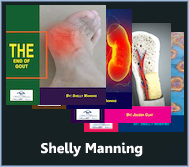 I used to have migraines every 10 or 12 days. I now haven’t had one for 14 months. I’m not expecting one ever again. Let me tell you how it all happened for me. And let’s see if it can be the same for you too.
I used to have migraines every 10 or 12 days. I now haven’t had one for 14 months. I’m not expecting one ever again. Let me tell you how it all happened for me. And let’s see if it can be the same for you too.
Click to see more detail on Video
Can you suddenly develop migraines?
Yes, it is possible for individuals to suddenly develop migraines, even if they have never experienced them before. Migraines can occur for the first time at any age, and they may onset suddenly without any previous history of headaches or migraine-like symptoms.
Several factors can contribute to the sudden development of migraines:
- Genetic predisposition: Migraines tend to run in families, suggesting a genetic predisposition to the condition. Individuals with a family history of migraines are more likely to experience migraines themselves. Therefore, someone who has a genetic predisposition to migraines may suddenly develop them due to genetic factors.
- Hormonal changes: Fluctuations in hormone levels, particularly in women, can trigger migraines. Changes in estrogen levels associated with puberty, menstruation, pregnancy, or menopause can influence migraine onset and frequency. Therefore, hormonal changes can lead to the sudden development of migraines in susceptible individuals.
- Stress and lifestyle factors: Environmental factors such as stress, changes in sleep patterns, dietary habits, and other lifestyle factors can trigger migraines. Sudden increases in stress levels or significant life events may precipitate the onset of migraines in some individuals.
- Environmental triggers: Exposure to certain environmental triggers, such as bright lights, loud noises, strong smells, weather changes, and irregular sleep patterns, can trigger migraines in susceptible individuals. Therefore, sudden exposure to environmental triggers may lead to the sudden development of migraines in some cases.
- Other health conditions: Certain underlying health conditions, such as anxiety, depression, sleep disorders, high blood pressure, and certain neurological or hormonal disorders, may increase the risk of migraines or precipitate their onset. Therefore, the sudden development of migraines may be associated with the onset or exacerbation of underlying health conditions.
While the sudden onset of migraines can be surprising and disruptive, effective treatment options are available to help alleviate symptoms and improve quality of life. If you experience sudden or severe headaches, especially if they are accompanied by other concerning symptoms, it’s important to consult with a healthcare provider for proper evaluation, diagnosis, and management. Early intervention and appropriate treatment can help reduce the frequency and severity of migraines and improve overall well-being.
How do you know when a migraine is coming on?
Recognizing the early signs of a migraine can help individuals take steps to manage symptoms and prevent the headache from progressing. While migraine symptoms can vary from person to person, some common warning signs or prodromal symptoms that may indicate a migraine is coming on include:
- Aura: Some individuals experience visual disturbances known as aura before the onset of a migraine headache. Aura symptoms may include flashing lights, zigzag lines, blind spots, or other visual changes. Aura typically occurs gradually over several minutes and may last for up to an hour before the headache begins.
- Changes in mood or behavior: Mood changes such as irritability, anxiety, depression, or euphoria may occur before the onset of a migraine. Some individuals may also experience changes in behavior, such as increased talkativeness or restlessness.
- Fatigue or yawning: Feeling unusually tired or experiencing frequent yawning may precede the onset of a migraine headache.
- Neck stiffness or muscle tension: Some individuals may experience neck stiffness or muscle tension in the shoulders or upper back before a migraine headache begins.
- Food cravings or changes in appetite: Craving certain foods or experiencing changes in appetite, such as increased hunger or decreased interest in eating, may occur before a migraine headache.
- Difficulty concentrating or brain fog: Difficulty concentrating, mental fogginess, or changes in cognitive function may precede the onset of a migraine headache.
- Sensitivity to light, sound, or smell: Increased sensitivity to light (photophobia), sound (phonophobia), or smells (osmophobia) may occur before the onset of a migraine headache.
- Changes in sleep patterns: Some individuals may experience changes in sleep patterns, such as difficulty falling asleep, waking up frequently during the night, or waking up feeling unrested, before the onset of a migraine headache.
It’s important to note that not everyone experiences prodromal symptoms before a migraine, and the presence or absence of these symptoms can vary from person to person and from one migraine episode to another. Keeping a migraine diary to track symptoms and triggers can help individuals identify patterns and recognize early warning signs of migraines. If you experience frequent or severe headaches, especially if they are accompanied by other concerning symptoms, it’s important to consult with a healthcare provider for proper evaluation, diagnosis, and management. Effective treatment options are available to help alleviate migraine symptoms and improve quality of life.
What is the average age of first migraine?
The average age of onset for migraines varies depending on the population being studied and other factors. Migraines can occur at any age, but they often first appear during adolescence or early adulthood. In some cases, migraines may begin in childhood, while in others, they may onset later in life.
Several studies have suggested that the peak age of onset for migraines is typically between the ages of 15 and 24 years old. However, migraines can occur outside of this age range, and there isn’t a specific age at which migraines are exclusively experienced.
It’s important to recognize that migraines can occur at any age, and the timing of onset can vary widely among individuals. While migraines are less common in young children compared to adolescents and adults, they can affect children as well. Additionally, migraines can onset or become more frequent later in life, especially in individuals who may have predisposing factors such as hormonal changes, stress, or other health conditions.
If you experience frequent or severe headaches, especially if they are accompanied by other concerning symptoms, it’s important to consult with a healthcare provider for proper evaluation, diagnosis, and management. Effective treatment options are available to help alleviate migraine symptoms and improve quality of life, regardless of age.
What does the start of a migraine feel like?
The start of a migraine can vary from person to person, but many individuals experience a distinct set of symptoms or sensations that signal the onset of a migraine attack. Some common experiences during the beginning stages of a migraine include:
- Prodromal symptoms: Before the headache phase begins, some individuals may experience prodromal symptoms that can serve as warning signs of an impending migraine. These symptoms can include changes in mood (such as irritability or depression), fatigue, food cravings, neck stiffness, increased yawning, or changes in appetite.
- Aura: Some individuals experience visual disturbances known as aura before the onset of a migraine headache. Aura symptoms may include flashing lights, zigzag lines, blind spots, or other visual changes. Aura typically occurs gradually over several minutes and may last for up to an hour before the headache begins. Not all migraine sufferers experience aura.
- Sensitivity to stimuli: As a migraine approaches, individuals may become more sensitive to certain stimuli such as light, sound, or smells. This increased sensitivity, known as hyperesthesia, can exacerbate discomfort and may be an early indicator of an impending migraine.
- Throbbing or pulsating sensation: As the headache phase begins, individuals may start to feel a throbbing or pulsating sensation in the head, often on one side. This sensation can gradually intensify as the migraine progresses.
- Pain: The hallmark symptom of a migraine is a severe headache characterized by intense, debilitating pain. The pain may be localized to one side of the head (although it can occur on both sides) and can vary in intensity from moderate to severe. The pain may worsen with movement or physical activity.
- Nausea and vomiting: Many individuals experience nausea and may vomit during a migraine attack. These gastrointestinal symptoms can accompany the headache phase or may occur before or after the headache.
- Other symptoms: Migraines can also cause a variety of other symptoms, such as dizziness, vertigo, difficulty concentrating, cognitive impairment, muscle weakness, numbness or tingling in the face or extremities, and changes in vision or hearing.
It’s important to note that not all migraine sufferers experience the same symptoms, and the presentation of migraines can vary widely from person to person and from one migraine episode to another. If you experience frequent or severe headaches, especially if they are accompanied by other concerning symptoms, it’s important to consult with a healthcare provider for proper evaluation, diagnosis, and management. Effective treatment options are available to help alleviate migraine symptoms and improve quality of life.
What are the warning signs that a migraine is coming?
The warning signs that a migraine is approaching, also known as prodromal symptoms, can vary from person to person and from one migraine episode to another. While not everyone experiences prodromal symptoms before a migraine, some common warning signs that may indicate an impending migraine include:
- Aura: Some individuals experience visual disturbances known as aura before the onset of a migraine headache. Aura symptoms may include flashing lights, zigzag lines, blind spots, or other visual changes. Aura typically occurs gradually over several minutes and may last for up to an hour before the headache begins.
- Changes in mood or behavior: Mood changes such as irritability, anxiety, depression, or euphoria may occur before the onset of a migraine. Some individuals may also experience changes in behavior, such as increased talkativeness or restlessness.
- Fatigue or yawning: Feeling unusually tired or experiencing frequent yawning may precede the onset of a migraine headache.
- Neck stiffness or muscle tension: Some individuals may experience neck stiffness or muscle tension in the shoulders or upper back before a migraine headache begins.
- Food cravings or changes in appetite: Craving certain foods or experiencing changes in appetite, such as increased hunger or decreased interest in eating, may occur before a migraine headache.
- Difficulty concentrating or brain fog: Difficulty concentrating, mental fogginess, or changes in cognitive function may precede the onset of a migraine headache.
- Sensitivity to light, sound, or smell: Increased sensitivity to light (photophobia), sound (phonophobia), or smells (osmophobia) may occur before the onset of a migraine headache.
- Changes in sleep patterns: Some individuals may experience changes in sleep patterns, such as difficulty falling asleep, waking up frequently during the night, or waking up feeling unrested, before the onset of a migraine headache.
It’s important to note that not everyone experiences prodromal symptoms before a migraine, and the presence or absence of these symptoms can vary widely among individuals and from one migraine episode to another. Keeping a migraine diary to track symptoms and triggers can help individuals identify patterns and recognize early warning signs of migraines. If you experience frequent or severe headaches, especially if they are accompanied by other concerning symptoms, it’s important to consult with a healthcare provider for proper evaluation, diagnosis, and management. Effective treatment options are available to help alleviate migraine symptoms and improve quality of life.
What to do when you feel a migraine coming on?
If you feel a migraine coming on, there are several steps you can take to help manage symptoms and potentially prevent the headache from progressing. Here are some strategies to consider:
- Take medication: If you have migraine-specific medication prescribed by your healthcare provider, such as triptans or other acute migraine treatments, take it as soon as possible after noticing the early signs of a migraine. These medications work best when taken early in the migraine attack and may help alleviate symptoms or reduce the severity of the headache.
- Rest in a quiet, dark room: Find a quiet, dark room where you can lie down and rest in a comfortable position. Avoid bright lights, loud noises, and strong smells, as these can exacerbate migraine symptoms.
- Apply cold or heat: Apply a cold compress or ice pack to the forehead, temples, or back of the neck to help alleviate migraine pain. Some individuals find relief from applying a warm compress or heating pad to tense or sore muscles.
- Stay hydrated: Drink plenty of water to stay hydrated, as dehydration can exacerbate migraine symptoms. Avoid caffeinated and alcoholic beverages, as these can contribute to dehydration and trigger migraines in some individuals.
- Practice relaxation techniques: Engage in relaxation techniques such as deep breathing, progressive muscle relaxation, guided imagery, or meditation to help reduce stress and tension, which can exacerbate migraine symptoms.
- Massage or acupressure: Gentle massage or acupressure techniques applied to specific areas such as the temples, forehead, or neck may help alleviate migraine pain and tension.
- Avoid triggers: Identify and avoid potential triggers such as certain foods, hormonal fluctuations, stress, lack of sleep, or environmental factors that may contribute to migraines. Keeping a migraine diary can help you track triggers and patterns.
- Consider caffeine: For some individuals, a small amount of caffeine (such as a cup of coffee or tea) may help alleviate migraine symptoms, as caffeine can have vasoconstrictive effects and enhance the effectiveness of certain medications. However, caffeine should be used judiciously and avoided if it is a known trigger for your migraines.
If your migraine symptoms are severe, prolonged, or accompanied by other concerning symptoms such as neurological changes, difficulty speaking, vision changes, or confusion, it’s important to seek prompt medical attention. Your healthcare provider can help determine the underlying cause of your migraines and develop a personalized treatment plan to help alleviate symptoms and prevent future attacks.
What is the stage before a migraine?
Before the onset of a migraine headache, many individuals experience a set of symptoms or sensations known as prodrome or prodromal symptoms. These symptoms can serve as warning signs that a migraine is approaching and may occur hours to days before the headache phase begins. Prodromal symptoms can vary widely from person to person and from one migraine episode to another, but some common experiences include:
- Changes in mood or behavior: Mood changes such as irritability, anxiety, depression, or euphoria may occur before the onset of a migraine. Some individuals may also experience changes in behavior, such as increased talkativeness or restlessness.
- Fatigue or yawning: Feeling unusually tired or experiencing frequent yawning may precede the onset of a migraine headache.
- Neck stiffness or muscle tension: Some individuals may experience neck stiffness or muscle tension in the shoulders or upper back before a migraine headache begins.
- Food cravings or changes in appetite: Craving certain foods or experiencing changes in appetite, such as increased hunger or decreased interest in eating, may occur before a migraine headache.
- Difficulty concentrating or brain fog: Difficulty concentrating, mental fogginess, or changes in cognitive function may precede the onset of a migraine headache.
- Sensitivity to stimuli: As a migraine approaches, individuals may become more sensitive to certain stimuli such as light, sound, or smells. This increased sensitivity, known as hyperesthesia, can exacerbate discomfort and may be an early indicator of an impending migraine.
- Changes in sleep patterns: Some individuals may experience changes in sleep patterns, such as difficulty falling asleep, waking up frequently during the night, or waking up feeling unrested, before the onset of a migraine headache.
It’s important to note that not everyone experiences prodromal symptoms before a migraine, and the presence or absence of these symptoms can vary widely among individuals and from one migraine episode to another. Keeping a migraine diary to track symptoms and triggers can help individuals identify patterns and recognize early warning signs of migraines. If you experience frequent or severe headaches, especially if they are accompanied by other concerning symptoms, it’s important to consult with a healthcare provider for proper evaluation, diagnosis, and management. Effective treatment options are available to help alleviate migraine symptoms and improve quality of life.
 I used to have migraines every 10 or 12 days. I now haven’t had one for 14 months. I’m not expecting one ever again. Let me tell you how it all happened for me. And let’s see if it can be the same for you too.
I used to have migraines every 10 or 12 days. I now haven’t had one for 14 months. I’m not expecting one ever again. Let me tell you how it all happened for me. And let’s see if it can be the same for you too.
Click to see more detail on Video





